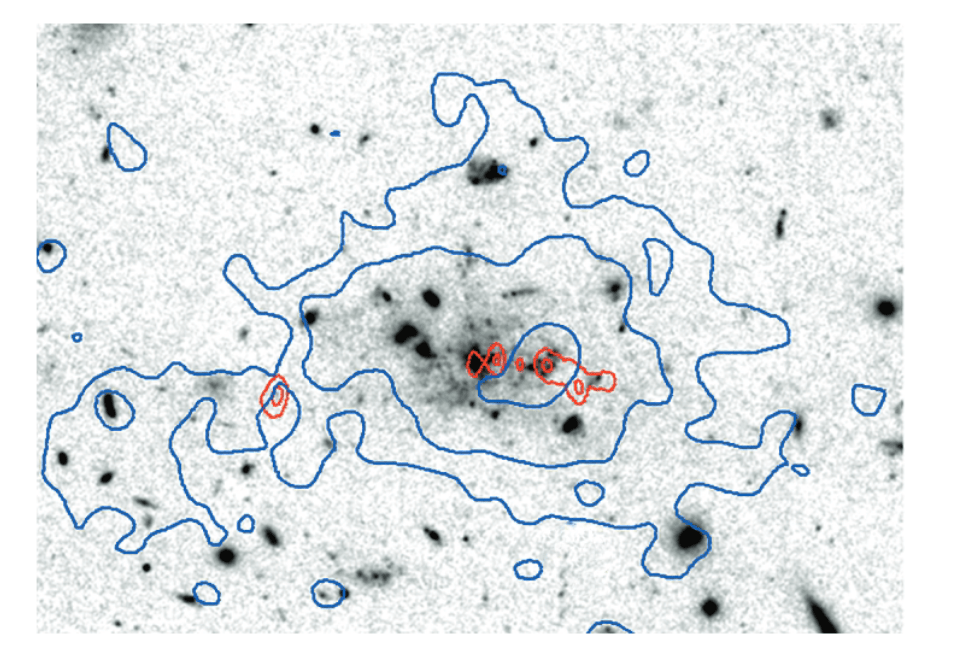Project area/S
- Extragalactic radio science
- The Distant Universe
Project Details
High-redshift radio galaxies (HzRGs) are among the most massive galaxies to form in the early Universe (see review by Miley & De Breuck, 2008, A&ARv, 15, 67). These very distant sources of powerful radio emission are important laboratories for investigating massive galaxy formation and evolution. Using a new HzRG selection technique, we have discovered the second-most distant radio galaxy currently known (at redshift z=5.55, observed when the Universe was only one billion years old!), and we now hope to find many more in our new follow-up sample of 90 HzRG candidates from the Murchison Widefield Array GLEAM survey.
Radio polarimetry is a powerful tool to explore the environments in which HzRGs reside. We have obtained broadband Australia Telescope Compact Array (ATCA) observations for our sample (with current plans to also propose for MeerKAT data; polarimetric data from the ASKAP RACS survey may be available by the end of the year as well), which can be used to calculate fractional polarization values, depolarization ratios and Faraday rotation measures. Large values in one or more of these parameters may indicate extreme associated magnetoionic environments. The results from this project will also be used to explore how the polarimetric properties may allow us to more efficiently select HzRGs from large radio catalogues.
Student Attributes
Academic Background
Physics with some Astronomy preferred.
Computing Skills
Some experience preferred for the following: (i) Linux, particularly simple shell scripting; (ii) Python or any other similar programming language the student is comfortable using.
Training Requirement
Experience with managing moderately sized radio astronomy data sets, relatively simple programming/scripting, radio data reduction and analysis in Miriad, using astronomical archives and catalogues, LaTeX.
Project Timeline
- Week 1 Inductions and project introduction, background reading and familiarization with ATCA
- Week 2 Initial Presentation, familarisation with Miriad and initial reduction of polarimetric ATCA data
- Week 3 Script data reduction steps to form a pipeline for the full sample
- Week 4 Initial analysis of polarimetric images and associated quality control
- Week 5 Determination of polarimetric properties: fractional polarization values, depolarization ratios and Faraday rotation measures
- Week 6 Determination of polarimetric properties: fractional polarization values, depolarization ratios and Faraday rotation measures
- Week 7 Initial analysis of results
- Week 8 Further analysis of results and comparison with the literature, identifying next steps for future work
- Week 9 Final Presentation
- Week 10 Final Report

